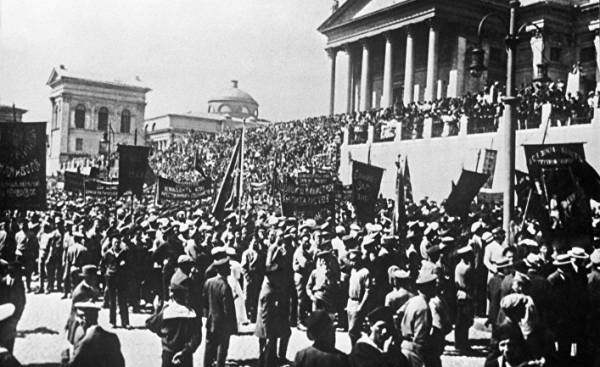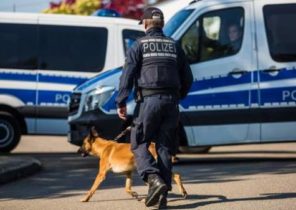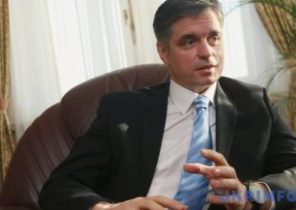
One hundred years ago on 16 March (3 March, old style) fell on Friday. Finland has lived according to the Gregorian calendar, although part of the Russian Empire, which still used the Julian calendar.
For several days in the country there were rumors about the unrest in Petrograd, the huge demonstrations, street battles and the struggle for power between the Duma and the Tsar.
There was no reliable information, however, no one, as the country had censorship, and informed the Governor General issued a decree blocked telegraphic communication with Petrograd.
In Finland, nothing yet knew that in the night of 1 to 2 (15) March, the garrison of Tsarskoye Selo eventually moved to the side of the revolutionaries, and later on the evening of March 2 (15) Tsar Nicholas II abdicated. After the king’s brother, Grand Duke Mikhail refused to accept the transferred Russian throne, the absolute monarchy came to an end.
In Russia there was a dual power: formal power was in the hands of the Provisional Committee of the State Duma (later — Provisional government), the actual power in the capital in the hands of the Petrograd Soviet of workers ‘and soldiers’ deputies.
In Helsinki the rumors about revolutionary events in Petrograd began to be confirmed Friday 3 (16) Mar.
In the morning in the Finnish Newspapers published the Declaration of the commander of the Baltic fleet, Vice-Admiral Adrian Nepenin that now the fleet is accountable to the Executive Committee of the State Duma:
“…I act in full agreement with the Executive Committee of the State Duma, which is occupied by the construction of the rear and calls for the troops to full obedience to their superiors, and workers increasingly work”.
People began to take to the streets in the hope to find out more. In particular, on the Senate square gathered a large number of people, but the chief of police of Helsinki has asked the people to go home.
By the evening of the same day the situation has cleared up completely. Additional evening editions of the Newspapers published the Declaration of the Interim Committee, which reported on the establishment of the Interim government, the restoration of civil rights and removal of restrictions on nationalities.
The revolution really has occurred but has not yet been complete and accurate information about what happened to the king.
The Governor-General and his closest assistant was arrested and sent to Petrograd
Meanwhile, the Governor-General Franz albert A. Zane, who was in residence at the South Esplanade, the building, now known as the “Smolna”, tried to keep the situation in the country under control.
Immediately after the start of the unrest Zane informed the commander of the Baltic fleet, Vice-Admiral Adrian Nepenin on the situation in the country and urged to prepare for riots and the attempts of the Germans to exploit the situation. The sea was, however, covered with ice, and the immediate military threat to Helsinki was not. Still, Zane gave the troops and officials the order to do everything possible to prevent disturbances and maintain order.
On the day of the abdication of the king 2 (15) Mar Zane sent to Petrograd telegram which reported that in Helsinki all is calm, and the next day, when it became known that the power passed to the Provisional government, Zane, in fact, became persona non grata. True, he still didn’t know about it.
The fact that 3 (16) March, Baltic fleet commander, Vice Admiral Adrian Nepenin received a telegram signed by the Minister of Railways of the Provisional government. V. Nekrasov with the decree about the arrest of Zane and his close Advisor, the Vice-Chairman of the economic Department of the Finnish Senate, Mikhail Mikhailovich Borovickova, and their further sending to Petrograd.
Nepenin not slow the execution of the order and invited Zane and Borovickova for the flagship Krechet supposedly for “an important meeting”. However, instead of the welcome Nepenin arrested its guests, and that evening they were sent by train to Petrograd.
According to rumors, after the train’s arrival at the Finland station in Petrograd Zane tried to find a cab that took them to the Tauride Palace. The guard who accompanied the arrested ex-executives of the Grand Duchy of Finland, however, Zane was hit with a rifle butt in the back with the words “walk the dog!”.
Reliable information about the fate of Zane and Borovickova no. After arriving in Petrograd them for a while kept under arrest in the fortress. Late spring, however, freed by the decision of the Chairman of the Extraordinary Investigation Commission (EIC) Provisional government N. K. Muraviev.
Finnish historians write that after his release, he unsuccessfully applied for a pension both from Russia and Finland. In 1918 he was again arrested, this time by the Bolsheviks, and they killed him in the summer of 1918. Finnish sources say that the murder of Zane’s happened or in Kronstadt or Petrograd. According to one version, he was drowned in the Gulf of Finland, in the Neva.
Zane’s right hand, Vice-President of the Senate of Finland, M. M. Borovikov in 1918-1921 he held the position of Professor at the criminal law Department of Petrograd University, where he read a special course in the Department of criminal science and criminal court. Also, according to Finnish sources, he continued to maintain contact with the professors of the University of Helsinki, who tried to help him.
According to rumors, the wife of the Governor-General Zane was the mistress Borovickova in Helsinki, and in Petrograd was his “housekeeper”. Sophia Ivanovna Zane was known in Helsinki as zealous lady. It was rumored that her Pets freely walked around the residence of the Governor-General. The last of them was discovered hanging on the chandeliers in the former residence of the Governor-General on the South Esplanade, after fighting in Helsinki ended in the spring of 1918.
Traces Borovickova lost after 1921…
Finnish politicians assured the new government of Russia in their loyalty
After the arrest of the Governor-General and his right-hand man and send them to Petrograd Vice-Admiral Nepenin, invited to his cruiser, “Merlin” also representatives of Finnish political parties. Among them were three future presidents — C. Th. Stolberg, Kyösti Kallio and J. K. Paasikivi. It is noteworthy that not all the invitees, the social Democrats came to the meeting.
Commander of the Baltic fleet of Russia said to the Finns that the new Commissioner of the Provisional government for the Affairs of Finland Fedor Rodichev will soon have to come to Helsinki to give details of what is happening.
Finns, in turn, assured Nepenin in his loyalty to the new government and the desire for peace. In particular, in Stolberg said that the Finns want peace and stability.
At the same time, the left Petrograd, the Finnish delegation. The provisional government reacted with understanding to the Finnish wishes and expressed willingness to issue a special Manifesto on the restoration of constitutional rights of Finland. The Finns were invited to participate in its drafting.
Work on the Manifesto continued for a few days. The social Democrats demanded the extension of the powers of Parliament and of social change, whereas the bourgeois parties were willing to settle for less. This divergence of positions was due to the fact that at that time in the Finnish Parliament the majority were social-Democrats and the bourgeois parties wanted to strengthen their position.
The result of the visit of the Finnish politicians in Petrograd was that the Provisional government on 20 March to restore constitutional law of Finland that existed before the decrees of Nicholas II on the limitation of rights, and assured the Finns that will not interfere in the internal Affairs of Finland.
Insurgent sailors staged in Helsinki carnage
Meanwhile, the Baltic fleet commander Vice-Admiral Nepenin was trying to hide the true state of Affairs from the revolutionary-minded sailors, but this proved to be a fatal mistake. Rumors rapidly spread, and sailors began to revolt. In the Baltic fleet began an armed rebellion.
At the meeting of the insurgent sailors accused Nepenin that he hid the news of the revolution in Petrograd, and asked him to voluntarily surrender the command of the fleet chosen by the sailors to Admiral Andrei Maximov.
Live Vice Admiral long. Nepenin was killed by a shot in the back Saturday the 4th (17th) of March. According to some, it happened in the Katajanokka area, next to the officers ‘ club, now there is a building of casino Katajanokan kasino, on the other — in the port of Helsinki, or, according to other sources, the Vice-Admiral was killed on the ice of the Gulf of Finland near the gate to the fortress.
Before these events the Vice-Admiral had to send to Petrograd telegram: “the Baltic fleet as a fighting compound is no more” — in another version: “the Baltic fleet is not efficient. Doing everything in my power.” And soon after another telegram: “Revolt on almost all ships.”
The circumstances of the death Nepenin there is contradictory information. According to one version, the group of sailors was arrested Nepenin, on the other, demanded that he went with them to the city for a rally on the occasion of the arrival from Petrograd to Helsinki the representatives of the new government.
According to eyewitnesses, captain of the corps of hydrographers N. M. Tarantseva, murder Nepenin happened like this:
“When a big crowd of sailors, part of a drunk — after a night of murders — most of “Emperor Paul I” came to demand that the commander of the fleet went with them to the rally… Admiral Nepenin decided to go, fearing the worst. To accompany him went to the flag-officer Thierbach and mechanical engineer… Kurierov. Both lieutenants. When the crowd, at the head of which was Admiral, just passed the gate, the sailors picked up, under the hands of Tirbah and Kurumisawa and threw them away into the snow behind a low iron fence. Nepenin stopped, took out a gold cigarette case, lit a cigarette, turning his face to the crowd and looking at her, he delivered as always, in a low voice: “Finish your dirty business!” Nobody made a move. But when he went back, he was shot in the back. And he fell. Immediately to the body rushed to the civilian and began to fumble in his pockets. In the crowd was heard shouting “spy!”. Then waited lax gray truck. The body of the deceased was immediately taken to the morgue. There it was raised up, propped with logs in his mouth and was stuck up.” (A. N. Pavlov. No. 3 // the anniversary of “bloodless”, 1954)
The evening of the same day Lieutenant Thierbach found the body of Vice-Admiral, washed, dressed and the next day was a funeral. Buried the former commander of the Baltic fleet Nepenin in the cemetery of the Orthodox parish of Helsinki, where his tomb is to this day. Judging by the flowers and candles, for grave care.
The victims of the February revolution in the Finnish capital were about 100 Russian officers
Three revolutionary days, from 16 to 18 March in Helsinki were killed, according to various estimates, about 150 Russian military, of which about one hundred were officers. According to others, in Helsinki, were killed and 45 officers. Accurate data on this point.
First, 3 (16) March, was killed by the commander of the 2nd brigade of battleships of the Baltic fleet, rear Admiral A. nebol’sin. Then followed the murder of Vice-Admiral Nepenin. The Navy officers were killed on the ships, pushing to the boiler and breaking their heads with a hammer, many drowned in the hole.
The next day, Saturday the 4th (17th) of March, the uprising spread and the army. Started killing officers on the streets. In particular, in the street Aleksanterinkatu was nailed to the wall Sveaborgskaya the commandant of the fortress, Lieutenant-General of the Navy Benjamin Protopopov.
In the days of the February revolution in Helsinki cruelly cut short the lives of many commanders of ships, sea and land officers. In the atrocities was later accused of Bolshevik agitators and German spies, but historians have found no evidence to support this claim.
The memory of those killed during the February revolution in the Finnish capital of Russian officers is kept in the Orthodox churches of Helsinki, in particular, in the assumption Cathedral and the Church of Elijah the Prophet in the cemetery of the Orthodox parish, where hang a memorial plaque with the names of those killed.
The Finnish General Mannerheim was hiding from revolutionaries in troubled Petrograd
In mortal danger in the days of the February revolution turned Finnish General in the Imperial army, the future Marshal Mannerheim, who at the end of February (new style — mid-March) was returning from Helsinki via Petrograd to the front of the First world.
In early 1917, the 12th cavalry division of the Mannerheim fought in the mountains of the Eastern Carpathians, on the territory of Romania. At the end of January 1917 the division was transferred to the reserve in Bessarabia, Chisinau (Chisinau), and Mannerheim asked for a short dismissal to go to Finland. In Tsarskoye Selo he met with the Emperor and Empress, and then went to Finland.
From Helsinki to Petrograd Mannerheim returned on February 24 (March 9), when the city has already started the unrest and protests. Mannerheim stayed at the Hotel dEurope, and 26 February (11 March) saw the ballet at the Mariinsky theatre. 30 years later in his memoirs, Mannerheim recalled, with some difficulty, he got tickets.
On the morning of Monday, February 27 (March 12), the General woke up, got dressed, looked out the window and saw the street crowds of people with red flags and armbands. Some of the protesters saw a man in General’s uniform, Mannerheim started to point the finger. In this moment somebody knocked at the door, that was the old Concierge, who explained the Finnish General officers began to arrest and showed him how to go back.
Mannerheim went to his old friend, the Director of the Swedish company Emmanuel Nobel. He, too, was excited, and the three of them decided — Nobel, Mannerheim and fellow-Frenchman — to go home to the Nobel. On the street Mannerheim recognized the officer by his soldiers ‘ boots. From the crowd came the cry, “behold, an undercover officer!” Three foreigners, however, managed to continue their journey and they safely reached the apartment of the Nobel.
Mannerheim, however, did not dare to linger there for long. He decided to move to the Finnish ensign Selina. There had already disappeared Finnish officer Michael Gripenberg, which had to Mannerheim, the sister’s husband, and retired General Torsten Lod. In the evening a group of revolutionaries broke into the apartment of Celine and said that they are looking for “the fugitive General.” Celine they calmly explained that the apartment is inhabited by a retired General, but he’s not at home now.
Mannerheim, who was talking on the phone, was dressed in a dressing gown and didn’t look military, but again he was given the boots. “Useful in the cold,” said Mannerheim and said that he was a Finn. The revolutionaries were content with this answer and left the apartment.
Meanwhile, the number killed in Petrograd had already reached a thousand. Mannerheim was able to return to the hotel to pack up, and on Thursday, 2 March (15 March) he took the train and went to his unit in Bessarabia. Finnish General at the time was 49 years.
Helsinki residents witnessed the bloody events
In Helsinki, the capital’s residents looked at the events in the city with genuine horror, and many of them witnessed the bloody events.
So, carpenter Emil vikström from Helsinki worked at a military shipyard along with poles, Latvians and Estonians. On Friday 16 March the crew, who worked for the Russian military ship, worked three Finns and Estonians. After the end of the day the Russian sailors invited them to have dinner together. Dinner was served soup, and after dinner, the carpenters and sailors began to watch the movie. However, they did not have time to watch the movie, as he heard the sounds of gunfire and noise. The three other carpenters were trying to leave the ship, but they were not allowed to do it. In Helsinki, the uprising of the sailors of the Baltic fleet.
The officers locked themselves in their cabins and refused to raise a revolutionary flag. However, the court one by one moved to the side of the revolution, the masts were raised the red lanterns and flags on the vessels were distributed winning shots and cries of “Hurrah!”.
In the end, the port had only one ship, whose crew has not joined the rebels. In the ship cabin of a Finnish carpenter, Emil vikström, his comrades and the sailors anxiously watched the events.
In the end the situation was resolved in the same way as on other ships. Any officers who resist were killed, and the ship moved to the side of the revolution.
On Saturday the rumors of the revolution confirmed
On Saturday morning, March 17, in Helsinki it was snowing. In those years, Saturday was a work day and people hurried to work and study. On the streets, however, was strangely quiet, trams did not go. In the Hakaniemi district in the streets marched the Russian military, and brass bands played the “Marseillaise” and other revolutionary songs.
The students learned that schools are not working, and students were sent home. Many students, however, did not hurry home, but stayed in town to watch the scene. One of them was 17-year-old student Johan Vainio.
“On the other side of Pitkasilta we saw a police officer. Toward the moving patrol sailors with revolvers in their hands. They tore the epaulets from the officer, told him something in a strange language to us and then shot him”.
“Another case I remember on Liisankatu. Russian soldiers lay hidden away in the arch of one of the houses. Down the street towards the city was moving the truck with the Russian officers. This soldier fired at the officers, one of them fell off the truck on the pavement. Soldiers also fired several shots, and the corpse twitched. This was the second murder, the witness which I have become in those days,” recalled later Vainio.
In General, the mood in the city those days, despite the shooting and killing, was festive and upbeat. The Finns were happy to get rid of the hated “king of the oppressor.” Was there hope for change for the better. A worn pinned to clothing red bows, even the supporters of the bourgeois parties.
People continued to flock to the city centre at station square. There were already thousands of soldiers and military workers of the shipyards. There were rumors that from Petrograd to come to the representatives of the Provisional government to explain to people the situation.
As soon as Petrograd received information about disturbances in the Finnish capital, the Executive Committee of the Provisional Government took the decision to send in the Helsinki delegation, led by the Menshevik Matvey Skobelev and the new Commissioner of the Provisional government for the Affairs of Finland Fedor Rodichev. Upon arrival in Helsinki, they went straight to the rally on the forecourt, where they were impatiently waiting for.
Suddenly a shot was heard. What was it? Whether shot from a hotel balcony Fennia is? The area began to panic. People tried to hide in the doorways of houses and get inside the station building, the National theatre and the Athenaeum. Soon, however, the situation calmed down and the speakers continued their presentation.
Distinguished guests from Petrograd managed to calm the situation, and murder, with few exceptions, ended by late afternoon Saturday.
The evening of the same day it became clear that the revolution has begun. Evening Newspapers wrote about the king’s abdication and the end of the era of the Romanovs.
The city was unusually quiet. Had no shops, no cafes. Many have drawn attention to the fact that the police also nowhere to be seen. On the streets lay the bodies of dead Russian officers and seriously injured military. Firefighters collected the bodies and took them to the hospital or the morgue. The first night after the beginning of the revolution was very quiet and peaceful. On the streets patrolled only the detachments of revolutionary sailors.
On Sunday morning, March 18, in the capital of the Grand Duchy, as always on Sundays, was heard the bell ringing, calling people to worship. The cafe was open, again cinemas and restaurants.
“In the capital of Finland peace and order,” was the headline in the newspaper Helsingin Sanomat.
The revolution opened the Finns promising, but vague
The first wave of the revolution went through the Finnish capital, shocking the Finns acts of violence. About 100 Russian officers and soldiers were killed on warships, and on the streets. The Governor-General and Vice-President of the Finnish Senate was arrested and sent to Petrograd.
The king was dethroned, he was replaced by a Provisional government, which declared the freedom and the continuation of the war.
But what did it all mean for Finns?
It soon became clear that among the inhabitants of Finland, there is no unanimity on this.
Sources:
Samu Nyström: Helsinki 1914-1918. Toivon, pelon ja vuodet sekasorron;
Risto Valonen: Suomen synty ja Eurooppa kuohuva;
Varho, Esko, Yle: Kun Suomesta tuli Suomi osa 3: Murha-aalto, Helsingin jäillä;
Jukka Halonen, IL: “Keisari on kaatunut”;
Seppo Varjus IS: Vapauden verinen koitto; Wikipedia






